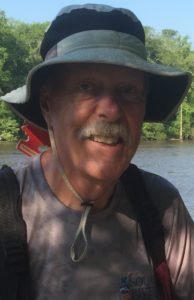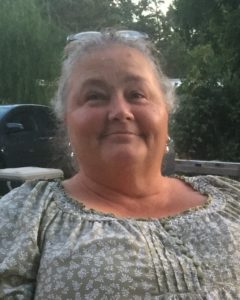Without Bill Hines’ help our kayak trip down the Neuse River would have ended at New Bern, N.C., assuming Mike Johnson and I had made it to New Bern.
Before we left Raleigh Bill had advised us about where we could camp. He had also emailed me a spread sheet identifying the distance between every bridge on the river so we always knew where we were, more or less.
His spread sheet was invaluable even though it was not perfect. One time Mike and I paddled hard for 50 minutes to cover what the spread sheet said was six tenths of a mile. The actual distance we covered had to have been more like three miles or more, but when I mentioned that to Bill he said we must have encountered “thick water.”
I admit, I didn’t get it at first.

Hines, who lives in Oriental, N.C., is a volunteer for Sound Rivers, a foundation that tries to protect the Neuse and the Tar-Pamlico Rivers. He was 70 years old but he paddles all the time, has for years, and he could go long and fast. I couldn’t keep up.
Early on I asked him how many minutes he paddled per hour.
“Sixty,” he replied.
[Hines didn’t rub it in, not at all. Still, I couldn’t help but wish I could have rolled the clock back to July, 2015, and have him join me on the Appalachian Trail in Munson, Maine, at the start of what they call the “100-mile wilderness.” That’s a 10-day hike, according to the trail club that maintains that section. I hiked it in five days.]
Bill met Mike and me at Cow Pens Landing, about 23 miles upstream from New Bern, and loaned us two sea kayaks. They were longer than our kayaks, which means faster, and more narrow. They had “skirts” to keep waves that come over the bow or the side from flooding them. He was also our guide for the last 40-some miles, to Oriental, showing us the way and reassuring us that we could do this. What a good guy.
Bill had advised me, several times, to say hello to “Ronda” when Mike and I got to Seven Springs, on Day Four.
We did.

Ronda Hughes let us camp in the backyard of her and her husband’s home, a beautiful, grassy spot next to the Neuse. She let us shower in their bathroom. And, best of all, she fed us supper – string beans, boiled squash, mashed potatoes and stew beef and gravy. [I had eaten two Pop Tarts for breakfast and candy for lunch.] I ate a heaping plate of food and when I finished Ronda said, “You want some more, don’t you.” I did. And I filled my plate again. Then we ate the desert Ronda had prepared, freshly baked cherry pie topped with home-made ice cream. Bless that woman.
Continued tomorrow: Paddling the Neuse, Part 2: Going The Distance